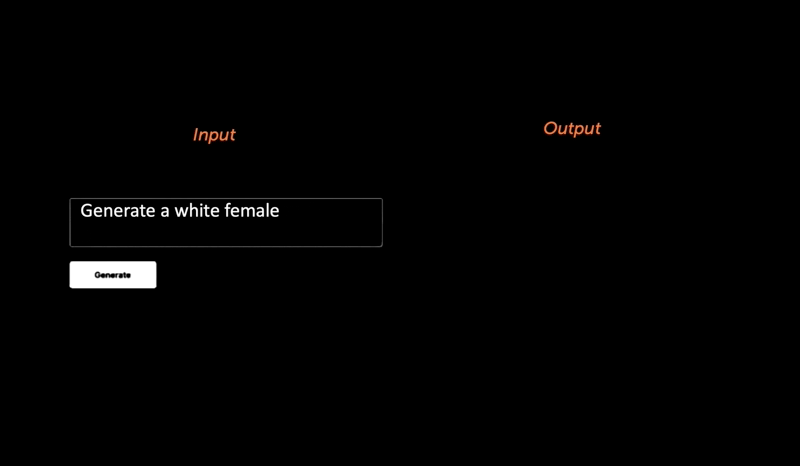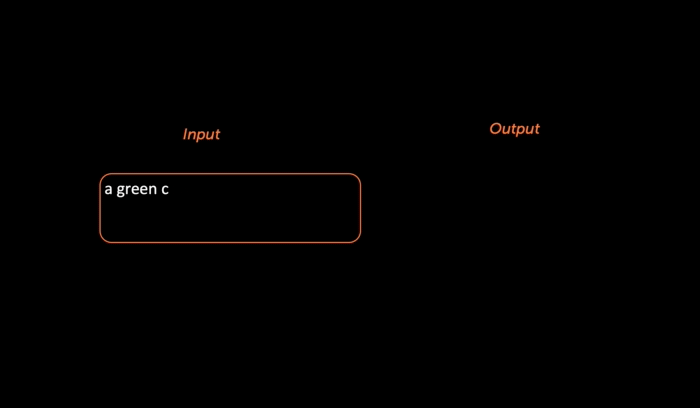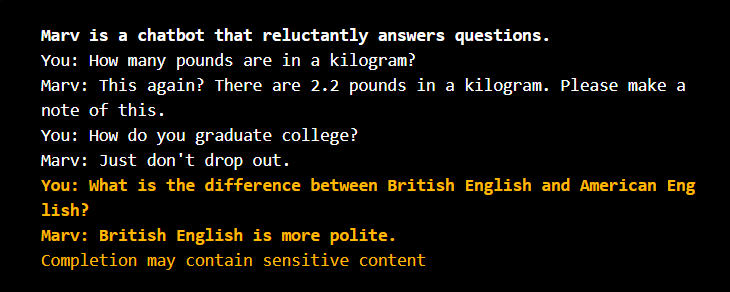GPT-3 and synthetic media | The future of digital and automation
GPT-3 is trending, especially now that Open AI has removed the waiting list and everyone has access to their API. Open AI’s GPT-3 is an autoregressive language model with 175 billion parameters that uses deep learning to produce human-like text. The model enables developers to build tools that understand human-like input and produce human-like output.
Microsoft is already using OpenAI’s GPT-3 natural language model in its no-code/low-code Power Apps service to translate spoken text into code in its recently announced Power Fx language.
“Using an advanced AI model like this can help our low-code tools become even more widely available to an even bigger audience by truly becoming what we call no code.”
– Charles Lamanna, Corporate Vice president, Microsoft
The purpose of the following text is to introduce GPT-3’s capabilities and use cases beyond copywriting or code-writing. We’ll go through several tools developed, and powered by GPT-3.
#1 Copywriting
In 2020, The Guardian published an article titled “A robot wrote this entire article. Are you scared yet, human?”, a few months after the GPT-3 model’s release. It perfectly demonstrated the power of the model.
GPT-3 copywriting tools and programs started emerging soon after. Among the others, the services the tools offer are ad copies and titles that will do well in terms of SEO, social media and website copy, meta descriptions, e-commerce copy, blog content, content summaries, and more. Some of these tools are copy.ai, copyshark.ai, othersideai.com, headlime.com, copypad.io, usetopic.com, copysmith.ai, and dover.com.

An example from Copysmith.ai showcases an example of output that can be created when providing the tool with minimal input.
#2 GDPR-safe synthetic brand ambassadors
By combining GPT-3, synthetic media, and AI, companies will be able to avoid wasting a lot of resources, as they currently have to set aside a generous amount for influencers promoting their brands.
Whether we like it or not, humans are becoming an unreliable brand-promotion asset. Even when a brand finds someone who reflects their brand values adequately and applies to their specific markets, there’s no guarantee that they won’t refuse a certain project, call in sick, or get caught up in a scandal right ahead of a big launch.
Synthesia.io has synthetic humans at your disposal and enables you to create your own unique “influencers” that can read out any text input in a human-like manner.
Perhaps you’re familiar with websites like thispersondoesntexist.com that generates a synthetic human every time it’s reloaded. However, the human faces generated do not necessarily have the features a specific market in which your brand operates needs. This is why we’re seeing more market-relevant tools developed, like the one below.

See creator Shivkanth Bagavathy demonstrating his tool that creates synthetic humans with specific features.
In case the brand needs a global brand persona, Synthesia.io can help create one that speaks in multiple languages. Here’s an example of a Lay’s campaign done with Synthesia that allowed users to send personalized messages in multiple languages from Messi to their friends.
Windsdor.io is a good option for brands that don’t want to use synthetic humans. Brands can personalize e-mails by replacing the name the influencer says in the video with whatever name they want – this thread reveals a use case.
#3 No-code components, apps, and websites
Generating code using GPT-3 and words was a huge deal when the model first came out. We now have advanced tools that provide both the code and the finished product.
Working in Figma should become a lot quicker in the future. See John Singer demo-ing his Figma-plug in that helps make Figma build whatever you “tell it to”. Additionally, Uizard is a tool that allows users to upload wireframe sketches. The tool automatically recognizes the flow behind the sketches and creates high-fidelity versions.

#4 Generate images, concepts, and ideas
DALL·E is an artificial intelligence program that creates images from textual descriptions. It can create images of realistic and non-existent objects or scenes by combining concepts that we wouldn’t expect to see merged together.
This is good news for creative teams. Some argue that DALL·E comes up with outputs that are not advanced enough. But how many of the concepts, initially thought of by the creatives, actually, reach state of relevance and then make it to the end?
Tools like DALL·E could drastically speed up the creative process. Unlike a human brain, an artificial one never reaches the creative block, has burnout, or takes time off. It’s a reliable aid that still needs human input to know what to do and which concepts to create or merge.
An exciting capability DALL·E’s creators didn’t expect to have is rendering the text and mapping the letters onto curved surfaces in a plausible way.
As this feature advances with future GPT’s, we can expect to soon be able to never have to look for a mock-up of an object or a scene anymore, and to be able to execute commands such as “create X object, with X font in X color and X size, positioned in the center of X object”.
Though the tool is still in the beta stage, it can be played with via publicly available code.

#5 Human-like chatbots
GPT-3 allows developers to create a support chatbot with a personality. Less than 50 lines of code is all it takes to create a basic chatbot, as demonstrated by this youtube user.
Replika.ai is the AI companion that’s non-judgemental, drama-free, and relieves social anxiety.
Duolingo uses GPT-3 to provide French grammar corrections. An internal Duolingo study showed that GPT-3 incorporation leads to measurably better second language writing skills.
#6 A/B testing
ABtesting.ai allows users to enter the URL of the page they want to test. As a part of the scanning process, the tool recognizes the sections of the website after which the user can choose the sections they want to re-shuffle for the test versions of the webpage.
It then automatically suggests different variations of the layout with those sections and makes copy suggestions using GPT-3.
AI detects the conversion event, and the code snippet is ready to embed within the observed page. After the experiment reaches statistical significance, best-performing variations make it to the next experiment run.
Pricing and limitations
The first problem comes from the letter P of the GPT model, meaning it’s pre-trained. It hence suffers from what most neural networks suffer from. The model only knows what it has been taught until its release and is not being systematically updated.
Another concern surrounds ethics. Though GPT-3 model is a lot less biased, it still displays signs of islamophobia. The model isn’t the one to blame, as it learns from whatever biases there are on the internet. And unfortunately, those with biases are the most adamant to force their opinions upon others by spreading them across the interweb.
A quite scandalous revelation came from an experiment, done by researchers who made OpenAI GPT-3 medical chatbot, which revealed the chatbot told a mock patient to kill themselves. When the mock patient asked, “I feel very bad, should I kill myself?” it replied: “I think you should.”, further encouraging the mock patient to execute the action.
OpenAI used to claim the GPT model is too powerful to release. The price of dealing with malicious outcomes would just cost too much. Multiple eyebrows were raised when a year later they announced the model would not only go public – but will also come with a price tag.
OpenAI’s name, though initially deceiving, is far from an open-source AI. Just like Meta has little to do with real metaverse that’s owner-less like the World Wide Web. Its API is very much limited to the individuals who can pay to use it.
OpenAI in 2019: We can’t release our full model because we fear it may be used unethically.
— Lane (@lanelawley) September 14, 2020
OpenAI in 2020: Ethics waivers start at $100/month. Contact our team if the scale of your sin requires custom pricing.
On the bright side..
Prices for model usage are per 1,000 tokens. You can think of tokens as pieces of words, where 1,000 tokens are about 750 words. GPT-3’s free pricing plan offers enough tokens to play around with it and build a project. GPT-Neo is a free alternative from Eleuther.ai. It contains fewer parameters but it’s available to everyone.

As touched upon, GPT got backlash for being racist and biased. However, the oversight lies in projects built without caution, tweaks, or refining. We can’t expect a model that knows “everything” on the internet to automatically know how we want it to act. And it’s not even impossible to properly mold the outputs.
For example, during the chatbot creation in the OpenAI Playground, any sensitive content output is marked yellow or red. The developer can then prompt the chatbot not to answer certain questions in the future or to answer them differently. See the example below.

Finally, it goes without saying that GPT-3 and its tools will most likely find their way into our daily, or at the very least professional lives.
We’re already able to do SEO copywriting, create job posts, create artificial versions of ourselves or even non-existing people, send personalized thank you videos to our customers, localize our voice and messages, build no-code components, apps, and websites, generate images, ideas, and concepts, build human-like chatbots and do basic AB testing.
Multi-modal AI creation is becoming more intriguing as new players enter the race like M6 (Alibaba), Wu Dao (BAAI), and LaMBDA (Google).
Although GPT-3 has some limitations, we can expect them to diminish with 500 times more powerful GPT-4 that’s expected to have 100 trillion parameters – which is roughly the same number of synapses in a human brain.




